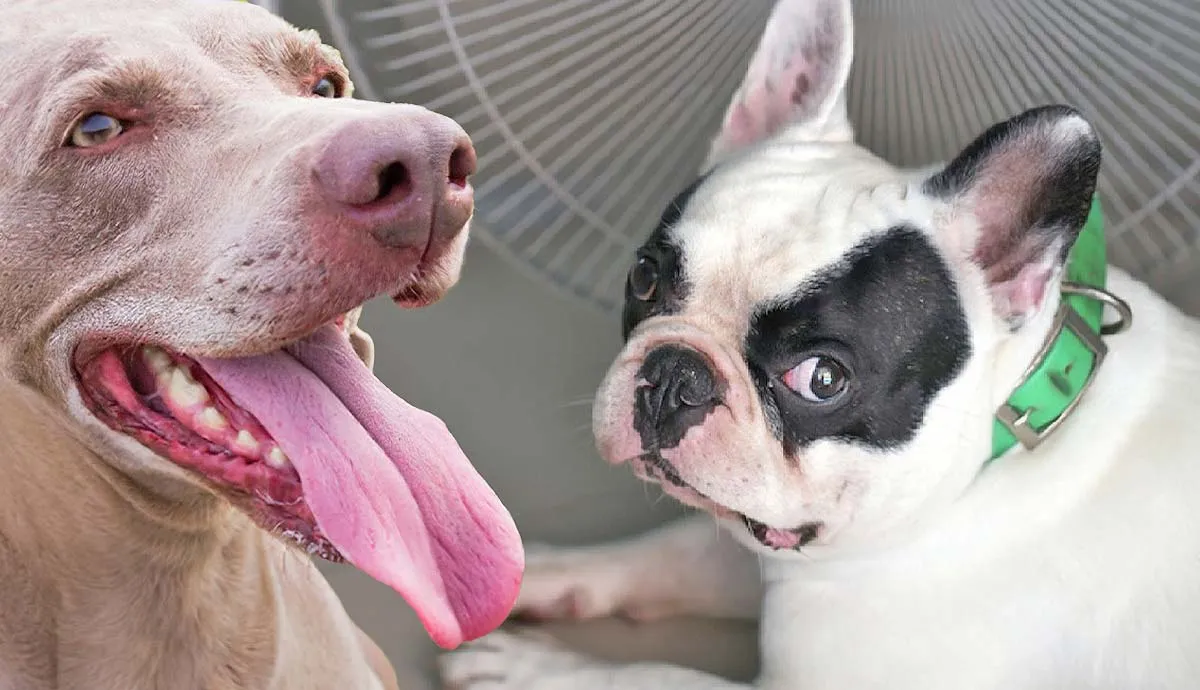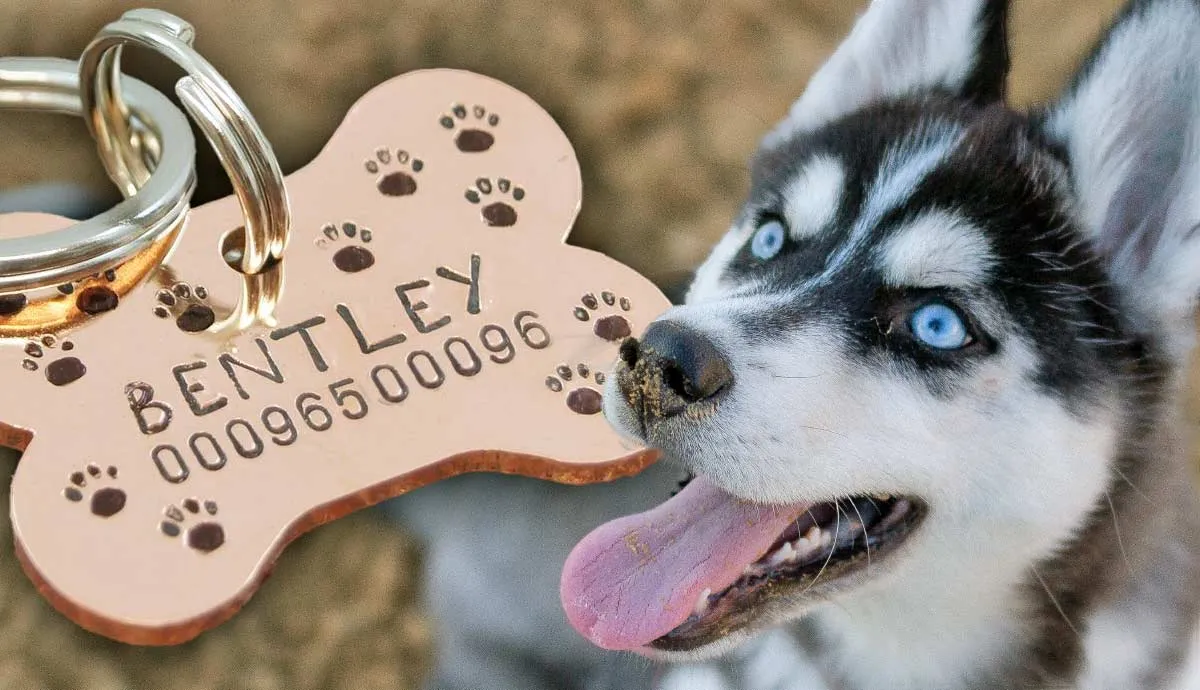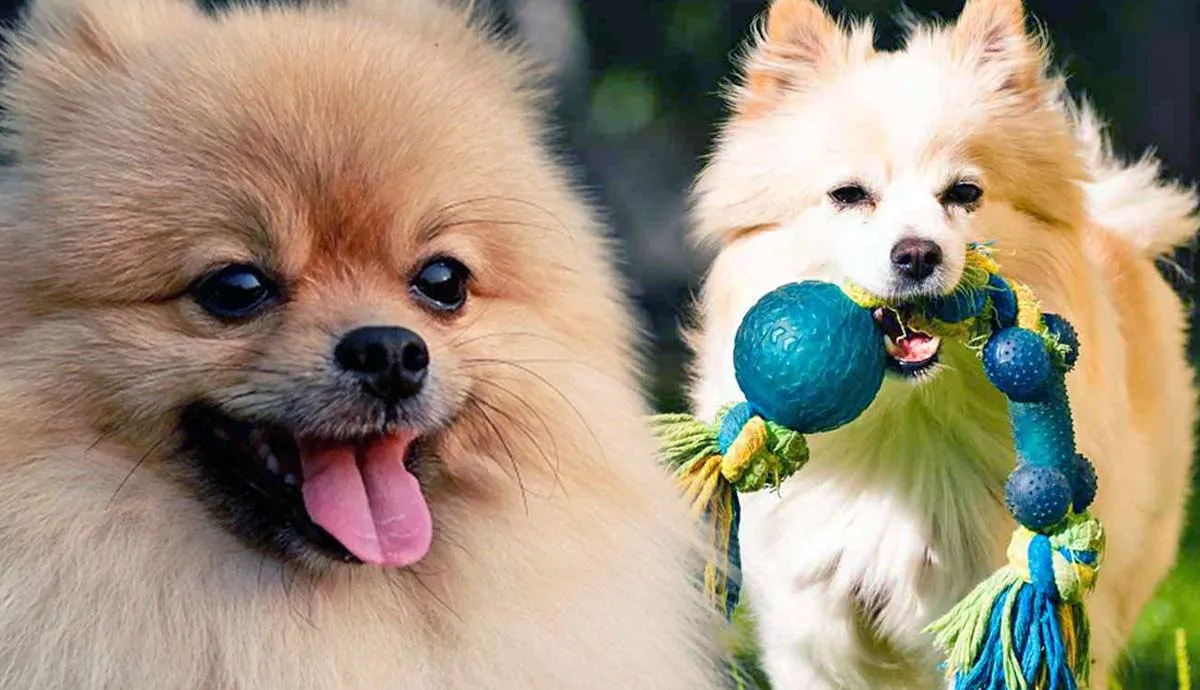Seeing a dog’s wagging tail is one of the greatest joys of being a dog owner. That bouncy body language lets you know your best friend is happy. However, some large breed dogs can injure their tail from repetitively striking it against hard surfaces.
Happy tail syndrome is damage to the tip of a dog’s tail from repetitive injury. This condition is painful for dogs and results in a dried, cracked, and bleeding tail tip. Without treatment, the condition can worsen.
How Does Happy Tail Syndrome Affect Dogs?

Happy tail syndrome mostly affects large breed dogs with muscular, thin tails. Pitbulls, German Shepherds, Great Danes, and Greyhounds are more likely to develop this health condition than smaller dogs.
Dogs with exuberant personalities often wag their tail vigorously into their surroundings. They end up injuring the tip of the tail, causing the skin of the tail to split open. Even after injury, many of these dog breeds continue to wag their tail, further damaging it.
They may develop bleeding ulcers. These injuries may not heal without treatment since continued wagging reopens the wounds. These open wounds may become infected. Severe cases may cause damage to the nerves.
What Are the Symptoms of Happy Tail Syndrome?
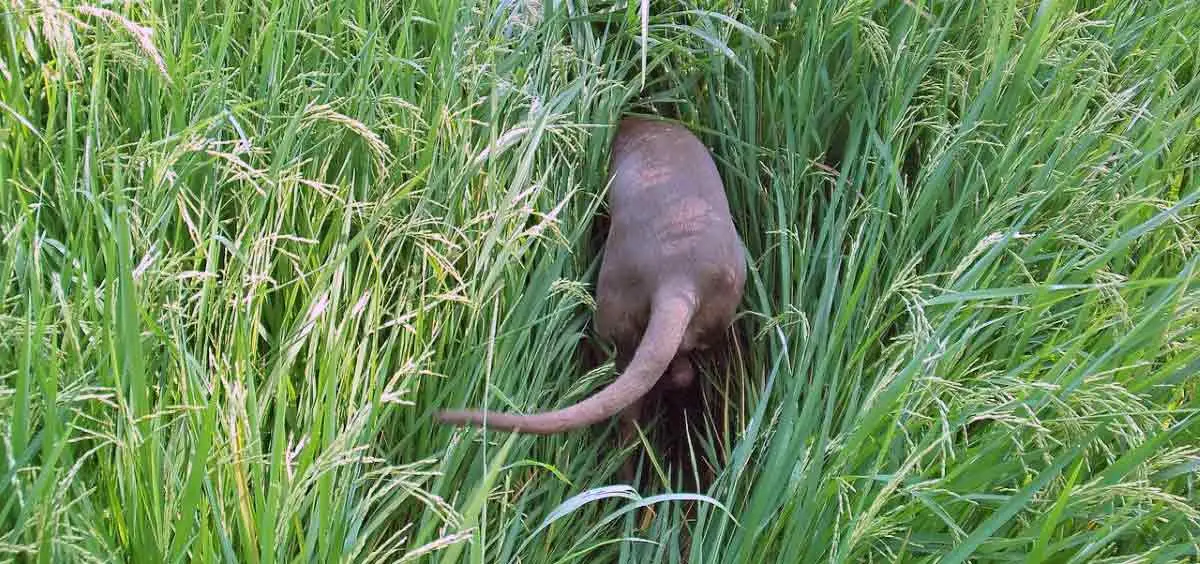
Happy tail syndrome is not very noticeable until it gets worse. Your dog should behave normally, and the only signs should be visual signs of the injury. Your happy pal will likely have no problem eating, drinking, and begging for snacks!
Here are symptoms you may notice if your dog is suffering from happy tail Syndrome:
- Blood around the home (an indication of a wound)
- Hair loss on the tail tip
- Cracked tail tip
- Open sores on the tail
These symptoms alone are not a cause for panic. But you should seek out veterinarian care as soon as you can. These symptoms often will not heal on their own and require treatment to fully resolve.
How Do You Treat Happy Tail Syndrome?
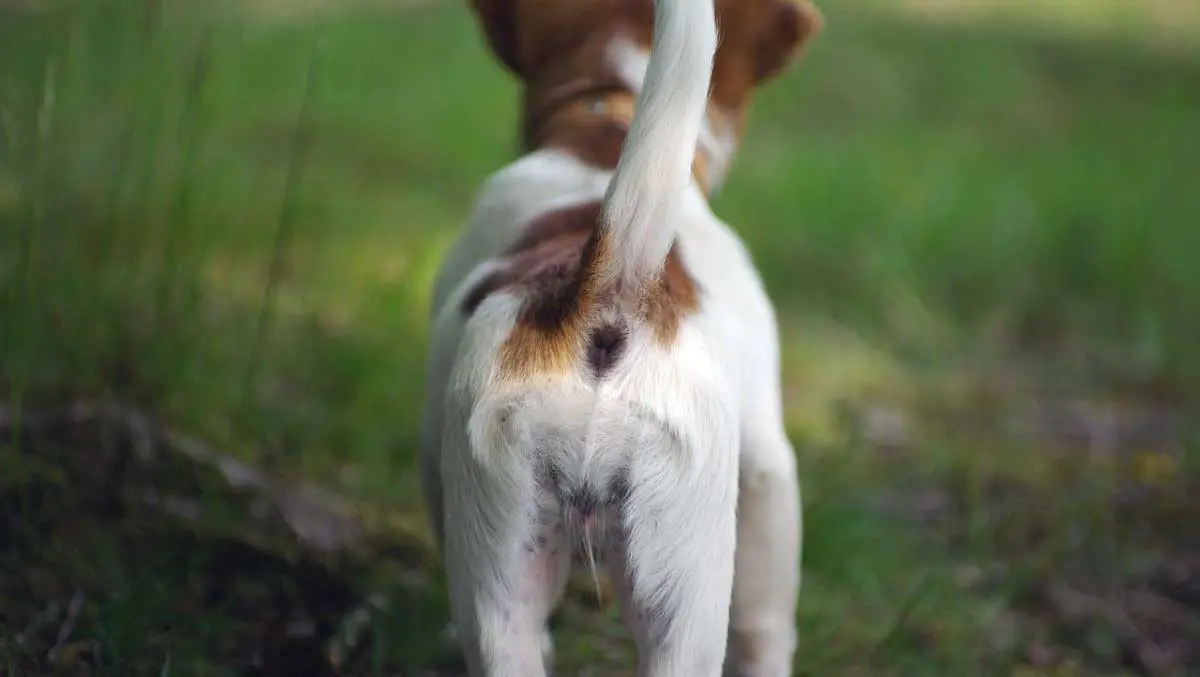
There are several treatment options for happy tail syndrome. The type of treatment will depend on the severity of the injury. For milder injuries, bandaging the tail and antibiotics may be enough to help the tail heal. These dogs may need “the cone of shame” if they are prone to pulling off bandages.
Dogs may need mild sedatives to keep the dog from wagging their tail and repeating the injury until it heals, as well. Happy tail syndrome can take a month or more to heal.
However, for more severe cases, your veterinarian may need to surgically close the skin split. Laser therapy may also help speed healing. However, if the injury does not heal, the veterinarian may need to amputate it to prevent further complications. This is one of the rare situations where docking a dog’s tail would be for more than cosmetic purposes.
Amputating the tail is a last resort when there is severe injury to the tip of the tail. Most cases are easily treated without resorting to this measure.
How to Prevent Happy Tail Syndrome in Your Dog
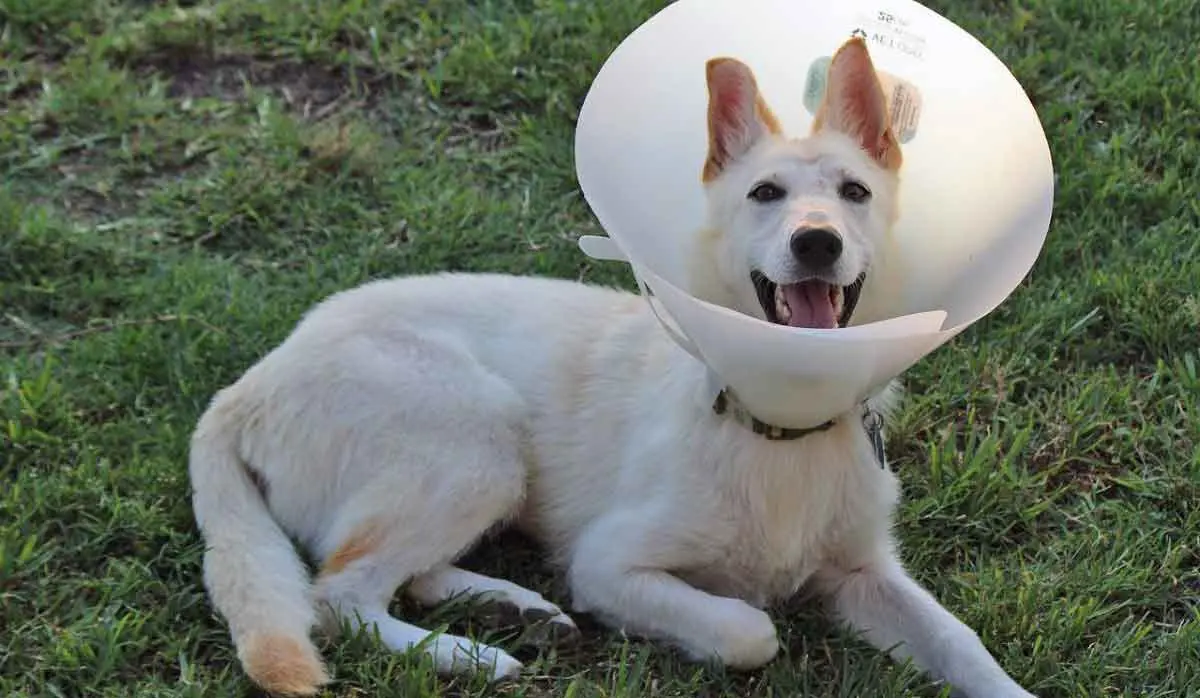
As noted, some dog breed owners dock their dogs’ tails to prevent happy tail syndrome. This changes the appearance of the tail, making it shorter, but it does prevent injury due to wagging.
When considering whether or not you should get your dog’s tail docked, you should weigh the risks and benefits carefully, as this is a permanent procedure.
Confined spaces also cause happy tail syndrome, so if your dog spends prolonged periods in a small kennel, they may need to have a larger crate or more time outside of it. The restriction of a small crate for a large dog may cause them to hit their tail against the hard, metal frame over and over.
You can also adjust your room arrangements to ensure the best flow of traffic, so your dog doesn’t constantly run into and hit on furniture in the way. Simply, providing more room in high traffic areas may prevent your dog from hitting up against hard surfaces with their tails.
Other Common Injuries for Dogs

Dogs can suffer a variety of injuries from broken bones to sprained tails. A luxating patella is a common injury to the kneecap that smaller dogs are prone to. This can be either a congenital condition that progresses over time, or it can be a result of an injury to the knee. This condition can make mobility difficult for your dog.
In big dogs, hip dysplasia is another condition to look out for. Although this too is often a result of genetics, fast growth, improper weight, and unbalanced nutrition can also cause this condition. Hip dysplasia causes decreased activity and mobility in the hips. It can lead to reluctance to jump and an unnatural gait. This condition is painful for your dog. Seek out veterinary care as soon as possible.
If you notice blood or restriction of movement in your dog, it is important to get them checked by a vet to make sure there are no serious injuries or conditions that your dog may be suffering from.
Happy Tail Syndrome: No Cause for Concern
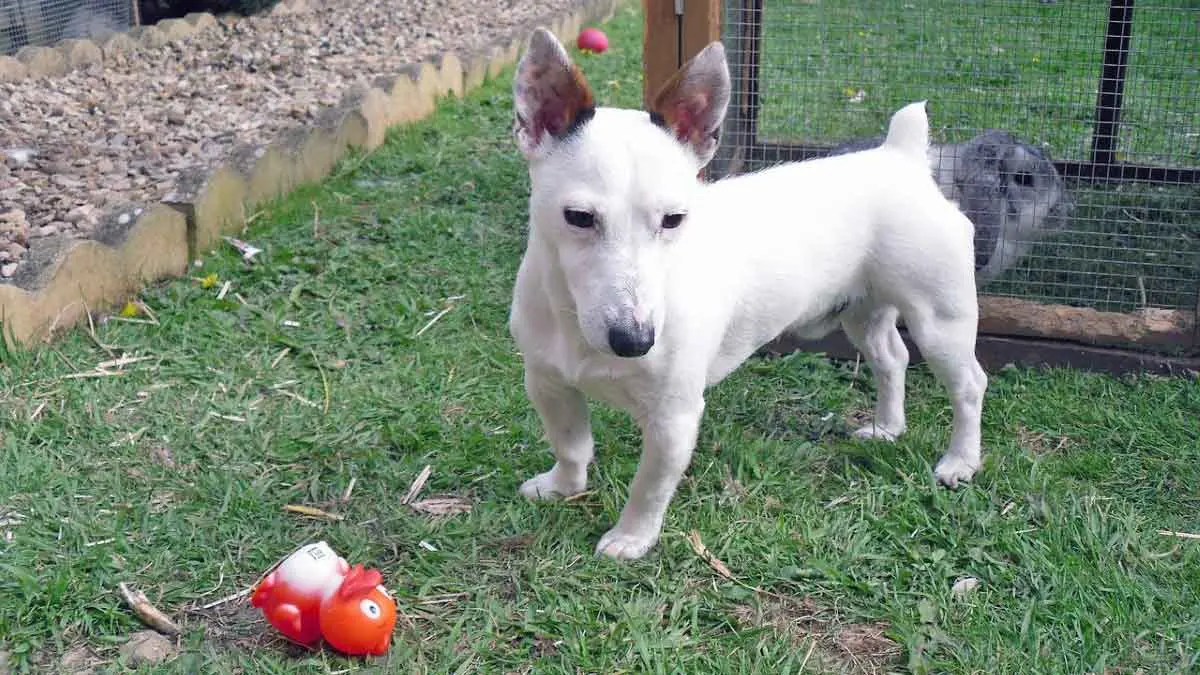
Happy tail syndrome is a condition that affects many energetic and boisterous large-breed dogs. This injury causes abrasions, open sores, and cracked skin. These injuries may become infected, or repeated trauma may result in nerve damage. Most cases of this are mild, and vets treat the dog with bandages, closure of the wounds, and antibiotics.
If you are worried your dog is damaging his tail by repeatedly wagging it against objects in the home, you can try a few different courses of action. You can rearrange furniture, provide a larger crate, or consider docking as a means of preventing this condition.


